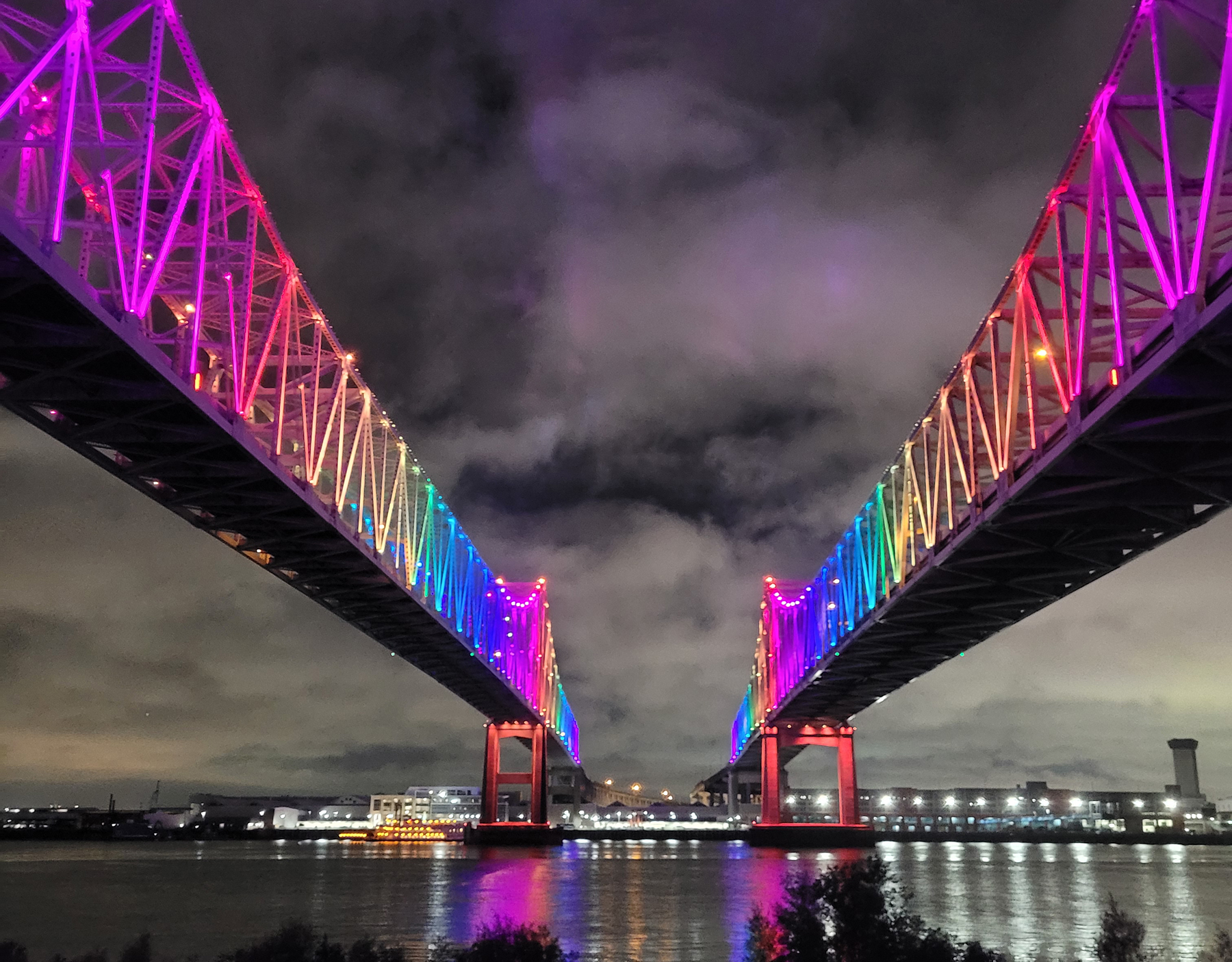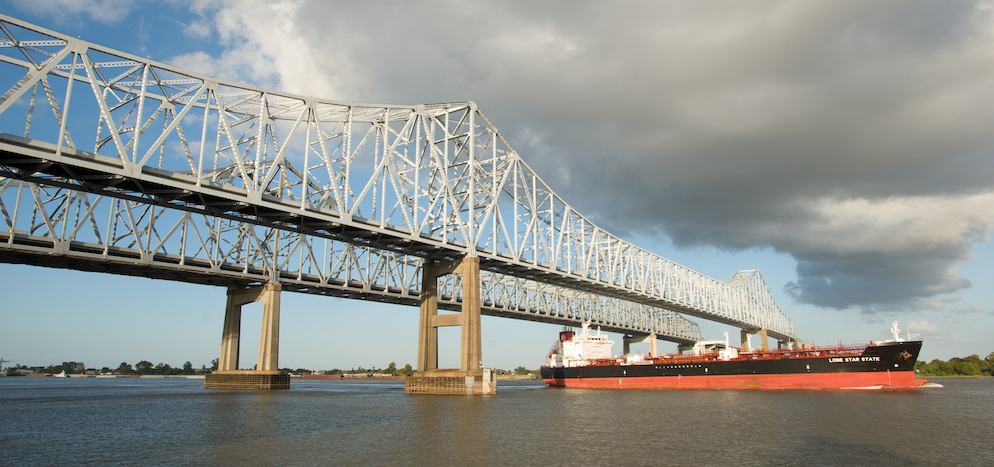 courtesy of Modjeski and Masters
courtesy of Modjeski and MastersBridge lighting isn’t just practical. It tells a story. The story of New Orleans’ Crescent City Connection is one of resilience and hope.
The Louisiana Department of Transportation and Development commissioned Modjeski and Masters in 2023 to design a new LED decorative lighting system for the bridge to replace what was permanently damaged during Hurricane Ida in 2021.
Further reading:
- Concrete collaboration promising for speedy, cost-effective bridge repairs
- Building bridges: Capstone project is a highlight for West Point cadets
- Buffalo community comes together to shape, celebrate pedestrian bridge
The lighting system has a 30-year lifespan and enables the city to choose from 42 preprogrammed color themes, according to a Modjeski and Masters news release. These themes include Louisiana mainstays such as Mardi Gras, Louisiana State University, and the New Orleans Saints.
Civil Engineering Source spoke to Modjeski and Masters electrical engineer and senior project manager Jon Gerhart, P.E., to learn about this bridge transformation.
Source: Describe the project.
Gerhart: The Crescent City Connection is a pair of twin-span cantilever trusses that cross the Mississippi River in New Orleans. The state wanted the lighting system completed by the 2025 Super Bowl (LIX), so (it) commissioned Modjeski and Masters to finalize a design in 2023, and the project was completed at the end of 2024.
What’s interesting is during the bidding process, no contractors bid on the project because the installation time was originally very limited. Given that the bridge is busy, the parameters to complete this project were to close one lane at a time over nights and on weekends. This was not ideal, especially for the work at the top of the bridge. By the time the lane was closed and equipment was set up, then equipment was broken down and the lane reopened, the actual installation windows would have been just 4-6 hours at a time.
To ensure the project could be completed in the desired time frame, the state spoke with (its) district engineers and a consultant. They decided to close one lane of the bridge from May through August to work during lower traffic volumes and added a queue detection system to the plan that alerted motorists of backups and traffic issues.
Source: How is the system accessed for maintenance?
Gerhart: The majority of the wiring distribution is under the bridge along a maintenance access catwalk, so most of the controllers are accessible from there. In the event an engineer would need to troubleshoot something, the majority of the issues will be at those controller sites, which are easier to access than the top of the bridge.
The lighting controller location under the bridge also means the system will be better protected against future weather events.
Source: What are the differences between these decorative lights versus the previous ones?
Gerhart: The old bridge lighting from 1987 was necklace lighting, so there was an aerial cable run along the length of the top chord with simple insulation piercing connections to each fixture. If the state needed to repair something, (workers) had to install a new connector and re-pierce the insulation, causing a weak point. These weak points were more susceptible to damage in storms and required more work to maintain.
While the team was up on the bridge during our initial inspection, we observed broken cables and damaged, open wiring lying over the top chord. Other connection points were damaged beyond repair from the hurricane. Those issues won’t happen again with this lighting system.
Everything is tied down to a new cable tray system installed along the top chord and the access catwalk under the bridge. The team chose manufacturer’s standard cables with preinstalled connectors for the final connections to the fittings on each fixture. With the new system, there is no need to pierce any insulation on the connectors, which caused problems with the old system. Because of these reasons, maintenance costs will generally be lower for this system.
 courtesy of Modjeski and Masters
courtesy of Modjeski and Masters
Source: What concerns were addressed through the completion of this project?
Gerhart: Because these bridges cross a busy water throughway, the project required Coast Guard approval. My team had to ensure the decorative lighting didn’t interfere with navigation lighting and that pier lights didn’t obstruct mariner views by reflecting off the water surface. Before the project began, the team sought out mariner input. And overwhelmingly, we received positive feedback at the end of the project, specifically about the lighting on the piers.
Source: Did your team take inspiration from other projects when implementing this lighting design?
Gerhart: We’ve worked on several bridge projects that involved decorative lighting, allowing us to learn the process and be confident in applying these systems to other bridges like the Crescent City Connection. One of those projects was the Wurts Street suspension bridge in Kingston, New York. It’s also a truss bridge, and we replaced decorative lighting, necklace lighting, and tower lights.



